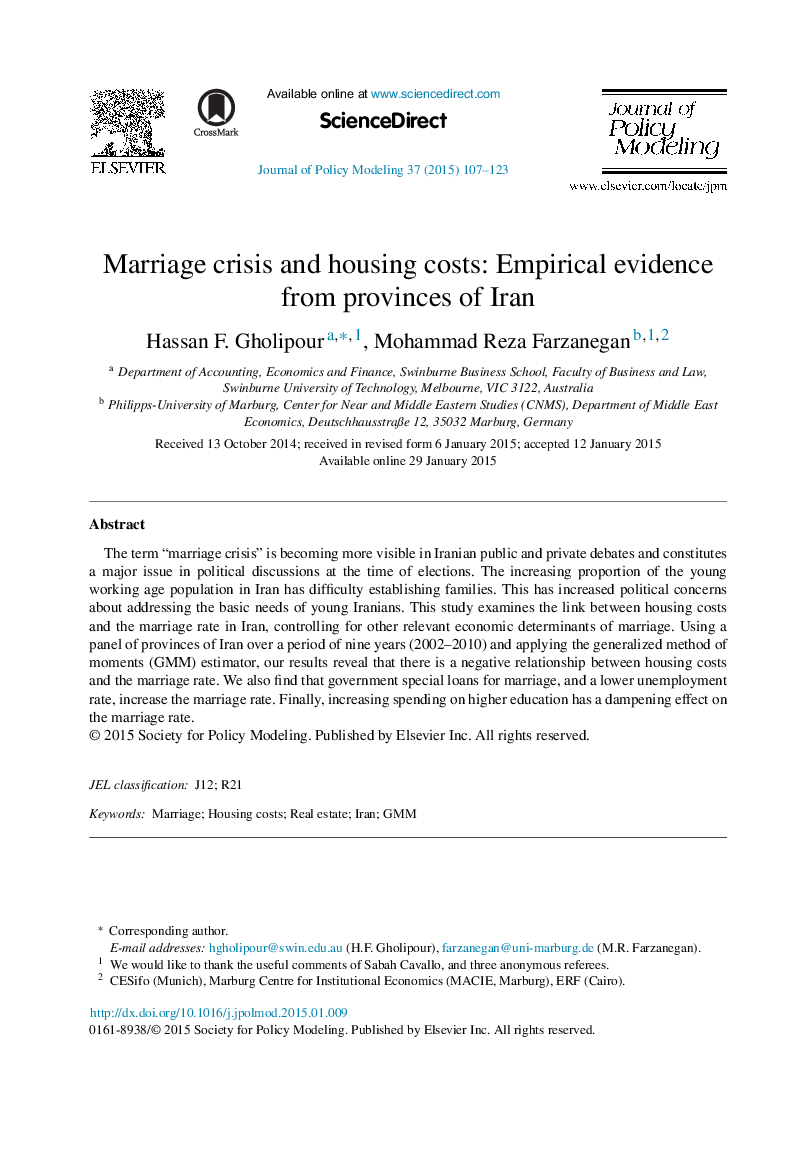| کد مقاله | کد نشریه | سال انتشار | مقاله انگلیسی | نسخه تمام متن |
|---|---|---|---|---|
| 968104 | 931444 | 2015 | 17 صفحه PDF | دانلود رایگان |
The term “marriage crisis” is becoming more visible in Iranian public and private debates and constitutes a major issue in political discussions at the time of elections. The increasing proportion of the young working age population in Iran has difficulty establishing families. This has increased political concerns about addressing the basic needs of young Iranians. This study examines the link between housing costs and the marriage rate in Iran, controlling for other relevant economic determinants of marriage. Using a panel of provinces of Iran over a period of nine years (2002–2010) and applying the generalized method of moments (GMM) estimator, our results reveal that there is a negative relationship between housing costs and the marriage rate. We also find that government special loans for marriage, and a lower unemployment rate, increase the marriage rate. Finally, increasing spending on higher education has a dampening effect on the marriage rate.
Journal: Journal of Policy Modeling - Volume 37, Issue 1, January–February 2015, Pages 107–123
